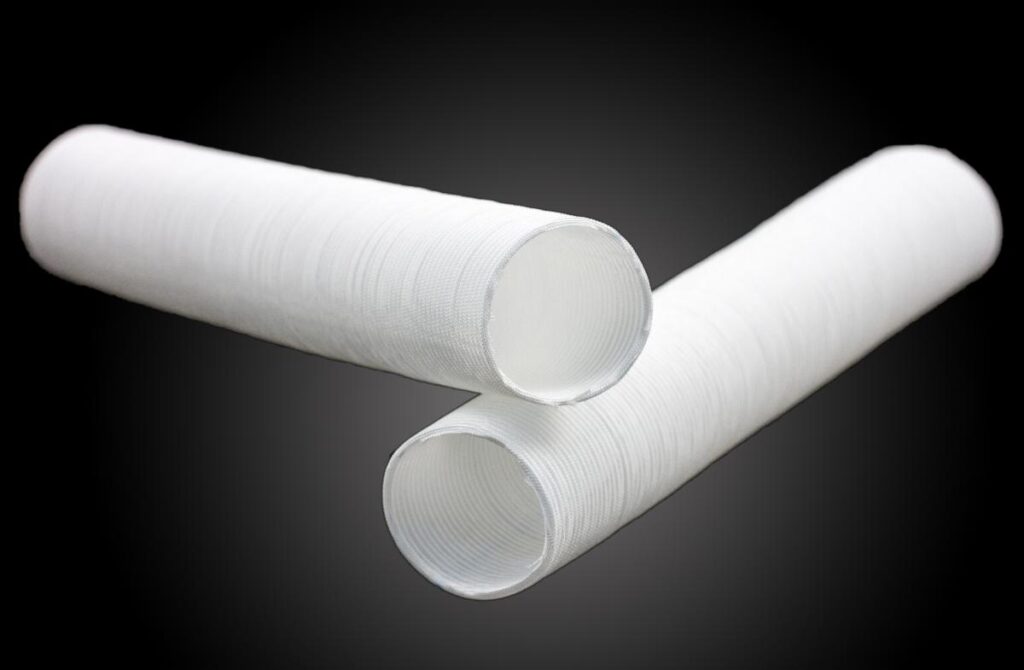
Biomedical textiles are a highly specialized, relatively small segment of the global textile industry. Even among the more advanced textile technologies, the path to commercializing medical textiles, generally, and biomedical textiles, in particular, is unusually challenging, facing stringent industry standards and government regulations that can take years to meet.
According to Allied Market Research, the global biomedical textiles market size was valued at $16.6 billion in 2022, and is projected to reach $30.3 billion by 2032, growing at a healthy CAGR of 6.2 percent from 2023 to 2032. Other market research firms have announced similar figures.
We asked industry participants to share their perspectives on what is necessary to achieve commercial success—and to maintain one’s place in this market segment. We also asked about the most promising new developments in the biomedical market—not just what’s already launched, but what is underway that could have an especially meaningful impact in the field of healthcare. This is more than speculation; it’s based on our sources’ extensive experience in this market space.
Defining your expertise
For more than 100 years Bally Ribbon Mills (BRM) has been developing and manufacturing specialized, engineered woven webbing, tapes, specialty fabrics, woven preforms, and two dimensional and three-dimensional structural fabrics. In the company’s more recent history, it has offered a product line of medical textiles and fabrics designed for use in cardiovascular, orthopedic, and dental prosthetic applications.
The move to provide materials for medical products was significant. “The market is probably one of the most difficult markets we’re in because the selling cycle is so long,” says Ted Fetterman, vice president, sales and marketing for BRM. “From concept to a relationship, from the introduction of that until you get commercial production—anything that is multiple units—that can be three to five years. It takes a long time, a lot of testing.”
So, how do they do it? “We have very robust quality control and how we handle raw materials, test them, store them, inspecting, packaging – it’s a lot of detail. We’ve had dedicated technical personnel, which is also expensive, in order to be able to do it and provide confidence to the customer.” But, he says, “It doesn’t always work. You can’t always align what your capabilities are with the needs of the customer.”
Fetterman explains that BRM is “not a medical company,” but rather it has capabilities in medical textiles because it has medical customers. Their customers’ needs have defined where the company fits into a larger picture, from research, to prototype, to materials manufacturing, to final end product.
“We don’t process the textile. We make and sell either a cut piece, or on a roll. That has allowed us some relief in bringing a product to market.” Better to work with the right partner with the technical expertise to bring it to market, he says. Furthermore, “It’s good to pick partners that are expert at one thing, because that kind of protects your idea.”
Successful innovation
There are two ways, he says, that BRM has been successful; one is supply chain-driven innovation. For example , the chemical companies and fiber producers come up with something new. In Fetterman’s example, it’s drug eluting devices, which makes it possible for a drug to be placed exactly where it needs to be to treat the patient.
“All we were doing is giving them the textile structure, because they couldn’t use the fiber,” he says. It needs to be converted into a textile. “If you could put the drug right where it needs to be, and it would stay there, you wouldn’t need the textile, but you can’t.”
In 2023, BRM made all the samples for trials, but “It’s going to be a couple of years,” he says. “At some point, it will be available to the medical community.”
The other path to success originates in the medical community and can come from the surgeons themselves. “The medical community talks about needs in the market because of what the surgeons say they want or need. When current products don’t provide it, “They ask if we can change it in some way so that it will work,” he says.
“You have to position yourself to fulfill that role. You never know where the next customer is going to come from. We position ourselves, so when they’re looking, they come to us. The key is to keep chipping away – be out there in the market, so that the synergistic relationship can find you.”
Bioresorbable materials
“One of the most exciting developments in biomedical textiles is the increasing use of bioresorbable materials such as PGLA and PLLA, says Michelle E. Lishner, Sales Engineer II with Cortland Biomedical, Cortland N.Y. “These materials are revolutionizing the field of tissue regeneration and repair by enabling the creation of scaffolds that gradually degrade as new tissue forms. For example, in orthopedic applications, bioresorbable textiles can serve as temporary supports for healing ligaments and tendons, eliminating the need for permanent implants or secondary surgeries for removal.”
Another key industry trend, Lishner says, is the advancement of thinner, smaller but stronger medical textiles. “As minimally invasive surgical techniques continue to evolve, there is a growing demand for implantable materials that provide high strength without added bulk,” she says.
She points to Cortland’s innovations in fiber technology and textile engineering which is developing ultra-thin, high-performance fabrics, designed to “enhance surgeon handling, procedural efficiency, and patient recovery.”
The company prides itself in “pushing the boundaries” in biomedical textile innovation across a range of surgical applications, including cardio and endovascular, orthopedic and sports medicine, as well as general surgery.
Regulations and investments
Lisher notes that one of her company’s most significant recent milestones was becoming an an FDA-registered contract manufacturer, which she says is important in supporting its OEM customers. “From concept and prototyping to full-scale manufacturing, this achievement enhances our ability to provide customized biomedical textile solutions that meet the stringent demands of implantable medical devices,” Lishner says.
In addition to regulatory advancements, the company has also made major investments in knitting and weaving, in addition to its braiding technologies. “Each of [the following] manufacturing techniques plays a critical role in advancing implantable medical devices,” she says.
- Knitting: Knitted textiles are highly flexible and can be engineered for precise pore sizes and elasticity, making them ideal for applications such as soft tissue repair, hernia meshes, and vascular grafts. Their ability to conform to anatomical structures while maintaining strength and durability makes them invaluable in tissue reinforcement procedures.
- Weaving: Woven textiles offer high tensile strength and dimensional stability, making them particularly well-suited for ligament and tendon repair, orthopedic reinforcements, and cardiovascular grafts. The company’s investment in advanced weaving techniques allows it to create fabrics with controlled porosity and biomechanical properties tailored for specific surgical needs.
- Braiding: Braided structures provide exceptional durability and load-bearing capabilities, making them a preferred choice for sutures, orthopedic fixation devices, and high-strength surgical implants. By refining braiding processes, the company has been able to design implantable constructs with optimal flexibility, strength and biocompatibility.
By expanding these capabilities, Cortland Biomedical believes it’s helping to drive a broader industry trend toward more complex, customized textile-based implants. “As demand grows for biomaterials that closely mimic native tissue properties, advanced textile engineering is playing a crucial role in the evolution of medical devices,” Lishner adds.
 TEXTILES.ORG
TEXTILES.ORG


